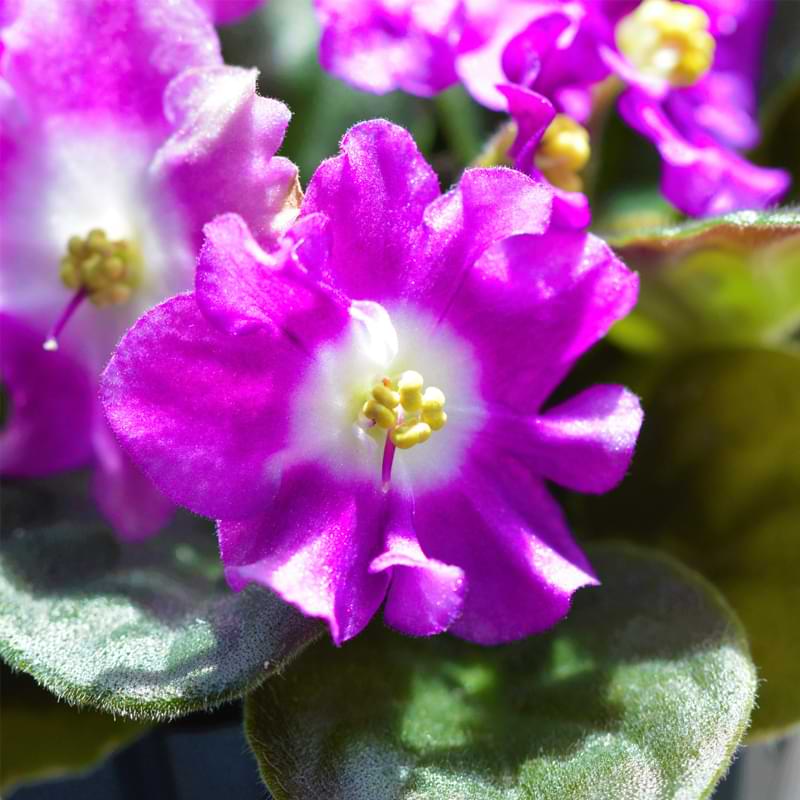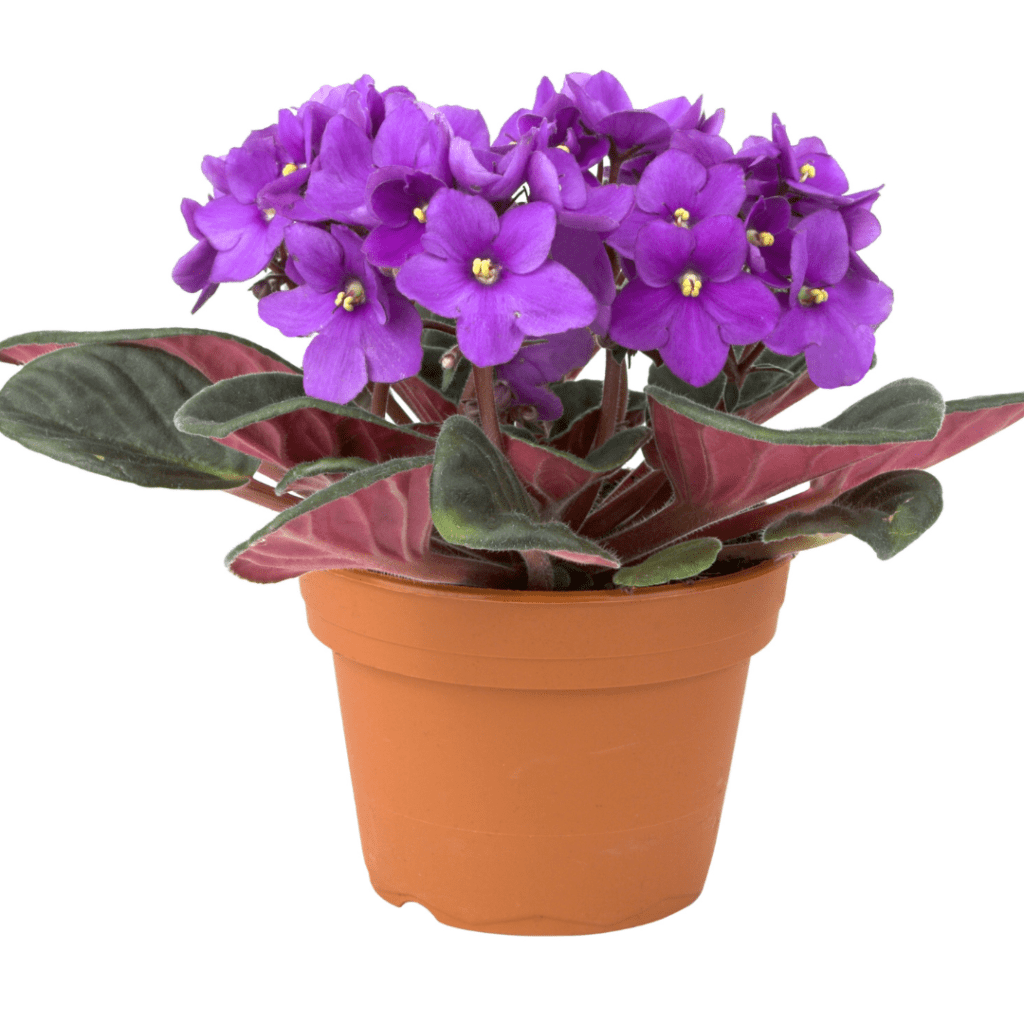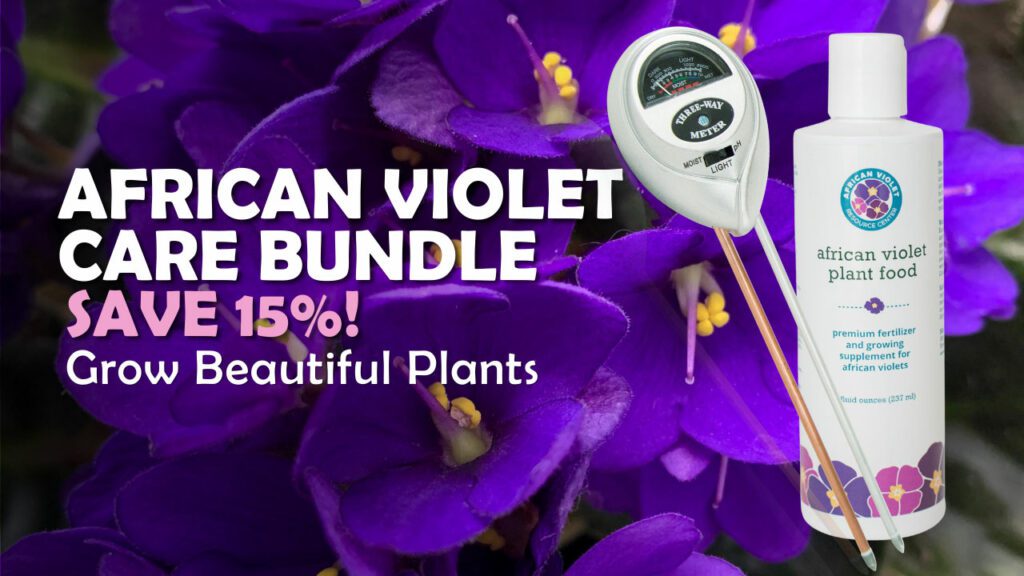African violets are a beautiful, flowering houseplant that can brighten up any room. But did you know that African violets can be divided and propagated through the process of crowning?
If you’ve got an overcrowded pot of African violets, or want to get some extra plants as gifts, read on to learn more about how to divide an African Violet crown! We’ll cover everything from why it’s important to divide African Violets, when is the best time for propagation, and how to split African violet babies with success.
Dividing African Violets
It’s easy to divide an African violet, and is the fastest way to get multiple plants from one single plant. African violets can also be propagated by leaf cuttings as well as by taking the “pups” from the side of the mother plant, but many people prefer dividing their plant to ensure they get a new, healthy plant from it.
When dividing an African violet, you need to locate the crowns in the plant. These “baby crowns” grow on the side of the main crown that should be in the center of the plant. You may have to look closely to find the other crowns, but they are likely there. As mentioned earlier, you can also get new African violet plants from the pups that your main plant gives you. Keep reading to learn more about that method, also.
Separating An African Violet Crown
Some plants, like the African Violet, will actually produce “babies” or offsets at the base of the plant. These can be carefully separated from the parent plant and potted up on their own. To do this, follow the simple instructions below, and be careful! Gather some supplies before you start this process, like:
- New pots for the baby crowns
- African violet potting soil
- Clean, sharp pruning shears
- A sharp knife
- Clean water
Remove From Pot
Gently remove your African violet from the pot it’s currently in, being careful not to hurt any of the stems or leaves. This is a great time to inspect the roots for damage or rot.
Brush Away Excess Soil
Loosen the soil around the roots. It’s best to do this on a surface that is easy to clean, as this part of the process can get messy.
Inspect Roots
Carefully look through the roots. If you see any brown or mushy roots, prune them off with your pruning shears. As long as you don’t prune more than a quarter of the roots, your plant won’t need any extra care to help it recover from this process. If there is significant damage to the roots, prune the dead/dying roots, and treat your plant with a root supplement after you have repotted it.
Dividing African Violets
Once you have inspected the roots and are sure that they are healthy, it’s time to divide your plant! Locate the extra crowns and try to see where that crown’s roots go. Take your sharp knife, and carefully cut the crown away from the main plant, going straight down into the root system. Be gentle and take your time, you want to leave each cutting with as many roots as possible without taking too many from the main plant.
Repotting
Once you’ve divided all of the extra crowns from your main African violet crown, it’s time to put them in their own pot with some fresh potting soil. When doing this, give them a layer of soil at the bottom of the pot, and then fill in soil around the roots. Don’t just drop your cutting in without giving the roots room to branch out and breathe. After filling your new pots, water them thoroughly, allow the excess water to drain, and place them somewhere that gets plenty of indirect sunlight.

Splitting African Violet Babies or Pups
Splitting the pups from your African violet plant is easy to do, and it’s a great way for you to get more plants. Pups, unlike crowns, grow from the stem of the plant, and take away nutrients from the main plant. To split the pups from the plant, just cut them off from the main stem of the plant, and pot them in their own soil. They will grow their own roots soon and turn into a new plant.
Separating Leaf Cluster Plantlets From The Mother Leaf
When you propagate your African violet, the leaf you have propagated from becomes the “mother leaf” when the new growth begins. Don’t remove the mother leaf until you have plenty of new leaves, or when the mother leaf turns brown and begins to die off. When it’s time, simply prune it off using your sharp, clean pruning shears.
If the mother leaf has produced several leaf clusters, you may want to remove all of them from the pot they are in and gently wipe away the soil to make the divisions, pulling the mother leaf gently from the root system, leaving the roots attached to the baby plantlets.
Best Time To Divide African Violets
The best time to divide an African Violet is in the spring or summer, when the plant is actively growing. This gives the plant the best chance at recovering quickly from being divided before it goes into the semi-dormant season.
Caring For African Violets After Dividing
Once you have divided your African violet crown or pups, it is important to care for the new plants properly to ensure they thrive. Here are some tips for caring for your newly divided African violets:
Light
African violets need bright, indirect light. Place your plant near a window where it will receive plenty of light, but out of direct sunlight, which can scorch the leaves. If your home is particularly dark, you may need to supplement with grow lights.
Temperature & Humidity
African violets are tropical plants, so they prefer warm temperatures and high humidity. They should be kept at a temperature of 70-80 degrees Fahrenheit and a humidity of 50-60%. If the temperature or humidity gets too low, the leaves will start to turn brown and curl up. If the temperature or humidity gets too high, the leaves will start to yellow and drop off.
Soil
When choosing a potting mix for your African violet, there are a few options. You can either purchase a mix specifically for African violets, or you can make your own using equal parts sphagnum moss, perlite, and vermiculite. Avoid using regular indoor plant soil for your African violet, as it may hold too much moisture which could potentially cause root rot.
Watering
Water African violets when the soil is dry to the touch. The best way to water them is by using a watering can with a long, thin spout so that you can direct the water right to the roots. Be sure to not get any water on the leaves, as this can cause them to rot. Allow the excess water to drain out of the pot and into a saucer. After about 15 minutes, empty out any water that’s collected in the saucer.
Fertilizing
Fertilizing is one of the most important aspects of an African violet’s upkeep. The best way to fertilize your African violets is to use an African Violet plant food formulated for African violets, to ensure they are getting a small amount of nutrients as often as possible as opposed to a ton of nutrients every month with a monthly fertilizer. Fertilizing this way will also help your plant produce even more blooms, making it well worth the extra effort.
FAQ How To Divide An African Violet
Can you cut an African violet in half?
Yes, you can cut an African violet in half. Cutting an African violet in half is a great way to propagate your plant and create new plants for your home or office. Take a look at the guide above to learn how to do it!
Join the African Violet Club!
Whether you’re just starting out or are a seasoned grower, African Violet Resource Center has everything you need to help your plant grow vibrant and strong. Explore our other articles, visit our online shop, and connect with other houseplant lovers in our Facebook group to learn everything you need to know about this rewarding hobby!
More Great African Violet Resources
The Best Houseplants for Your Environment
Everything You Need to Know About African Violet Leaves
6 Signs Your African Violet Is Dying and How to Revive It
Endless Summer: Here’s How to Grow an African Violet Garden That BLOOMS







